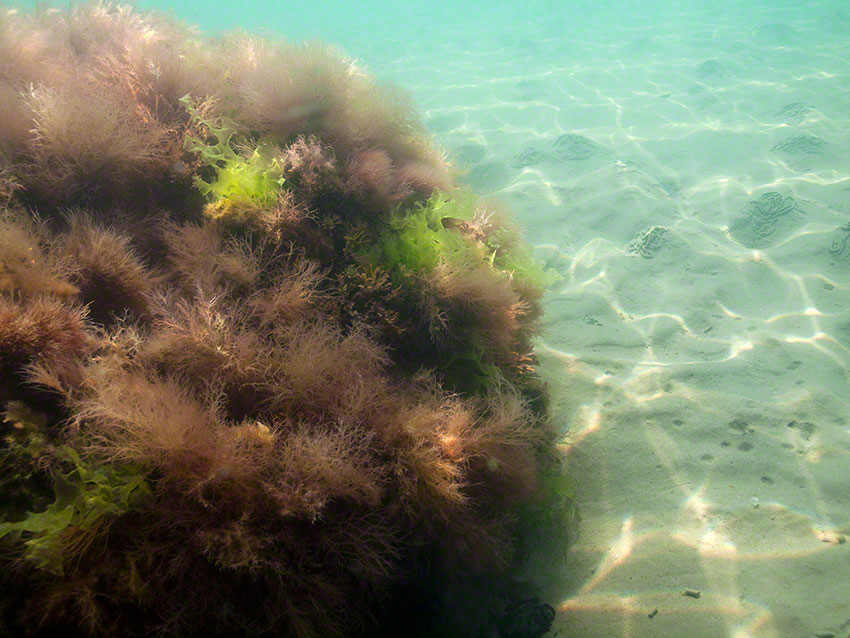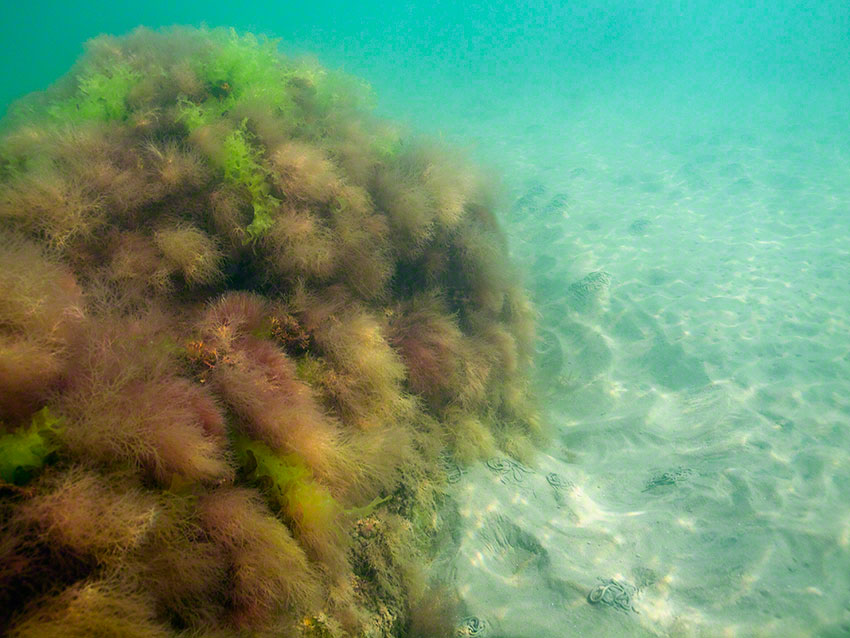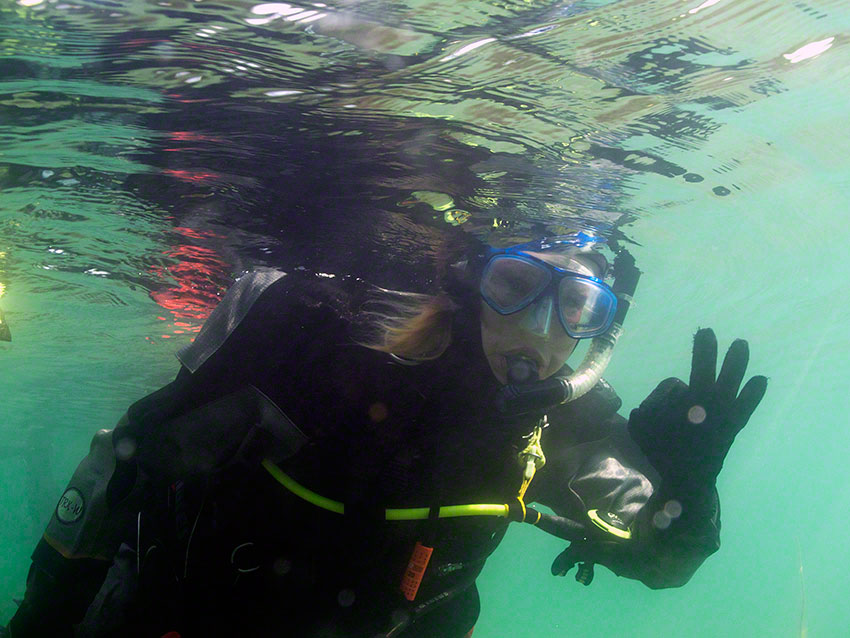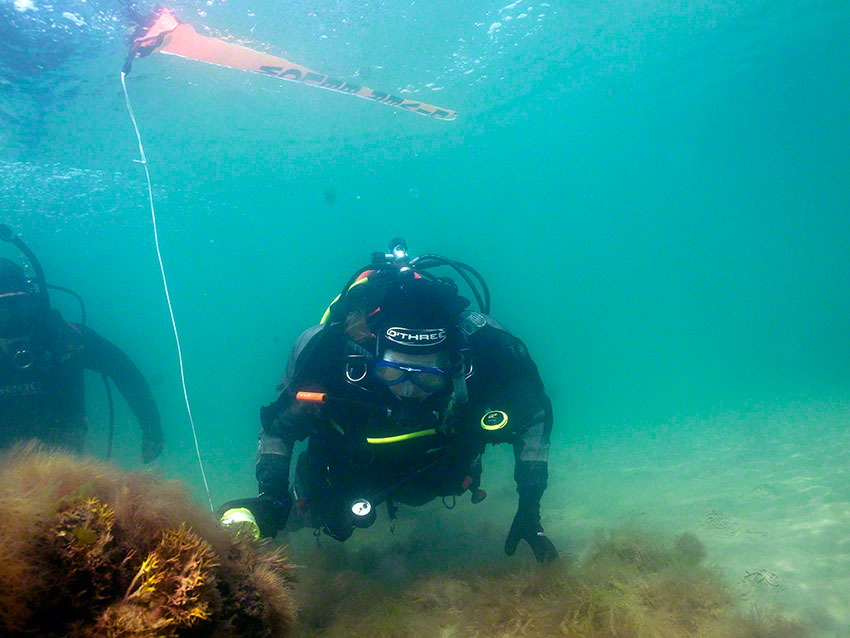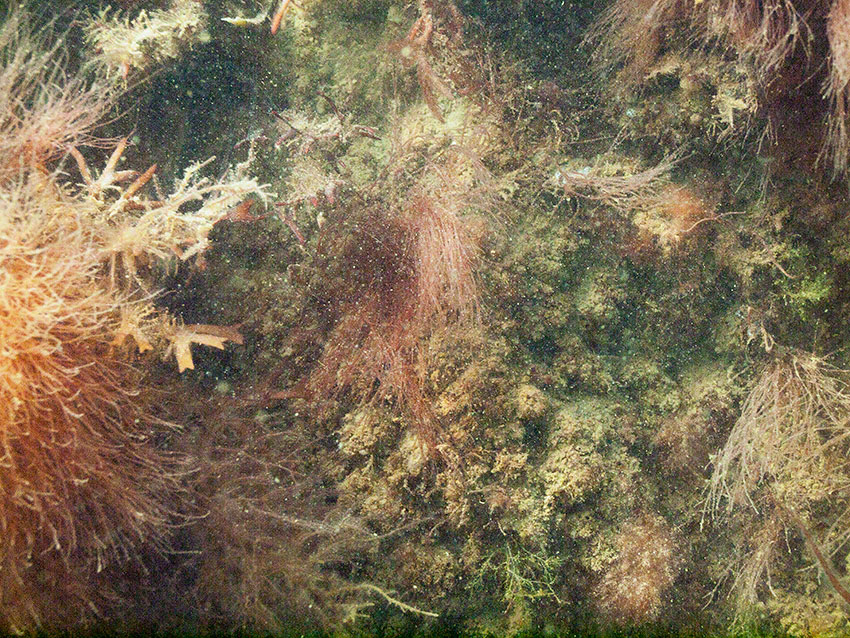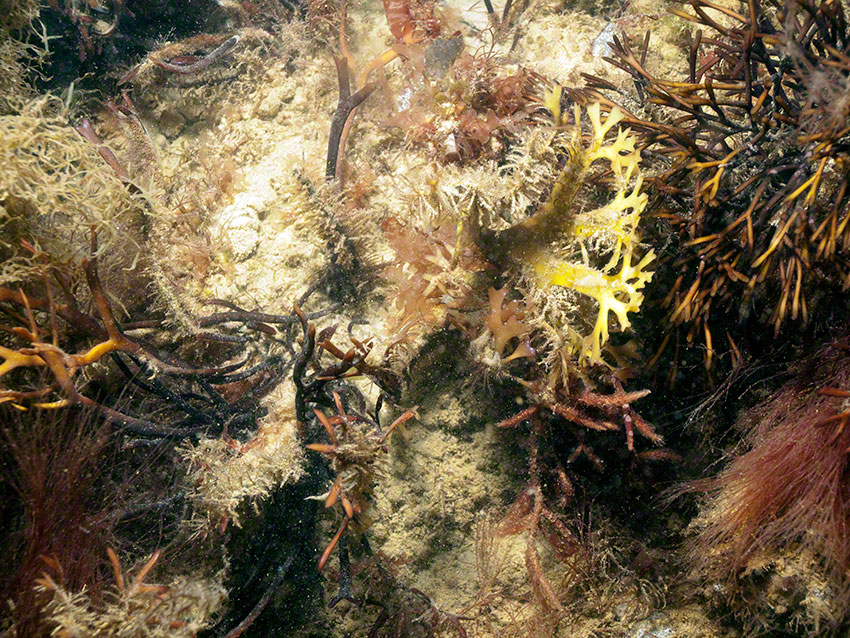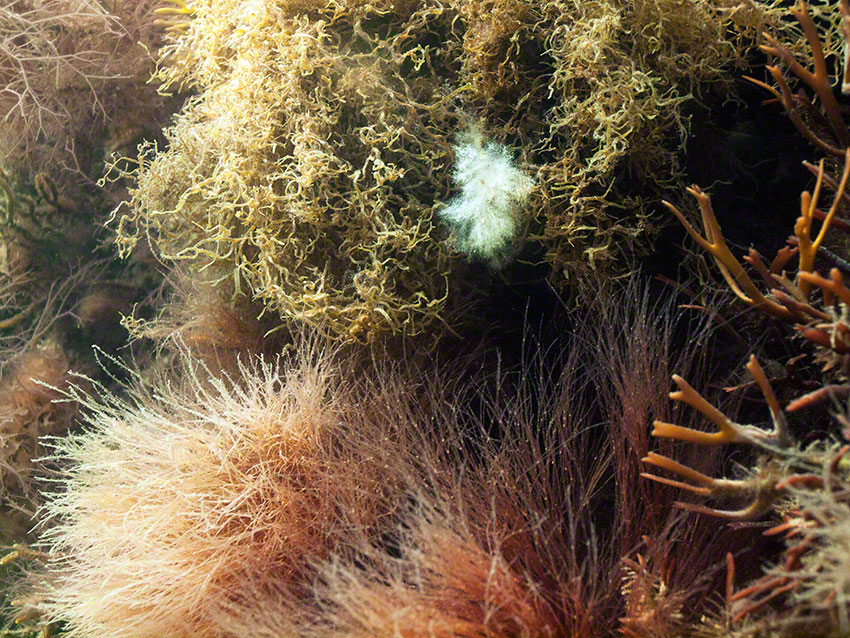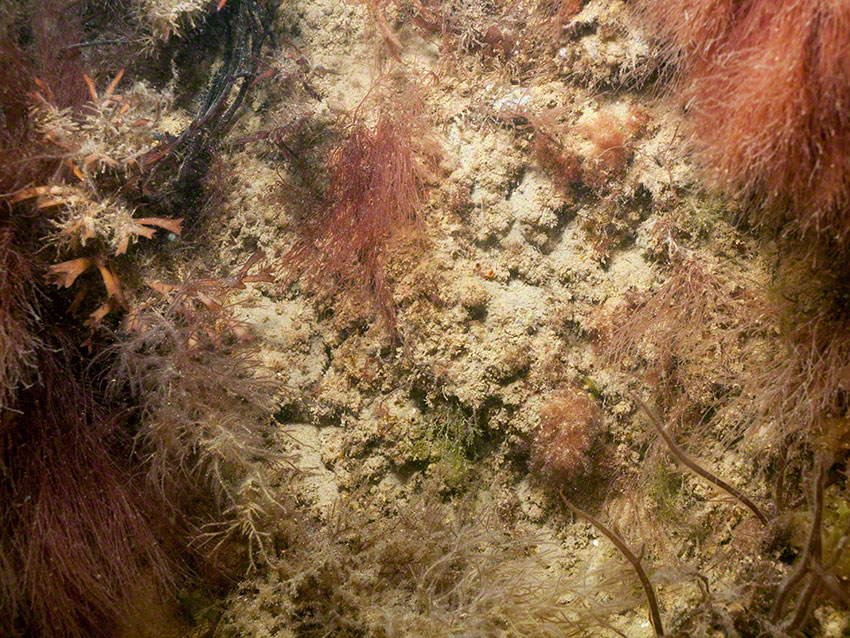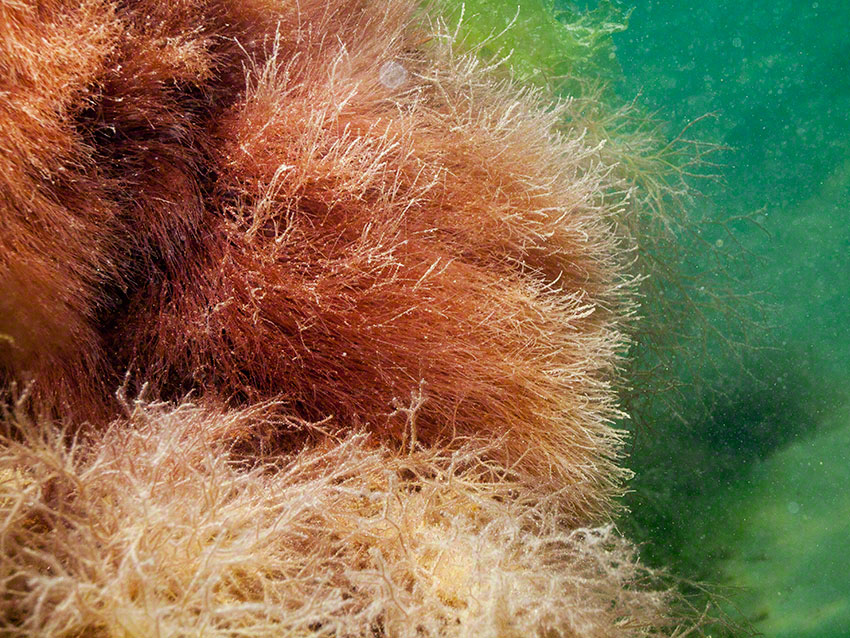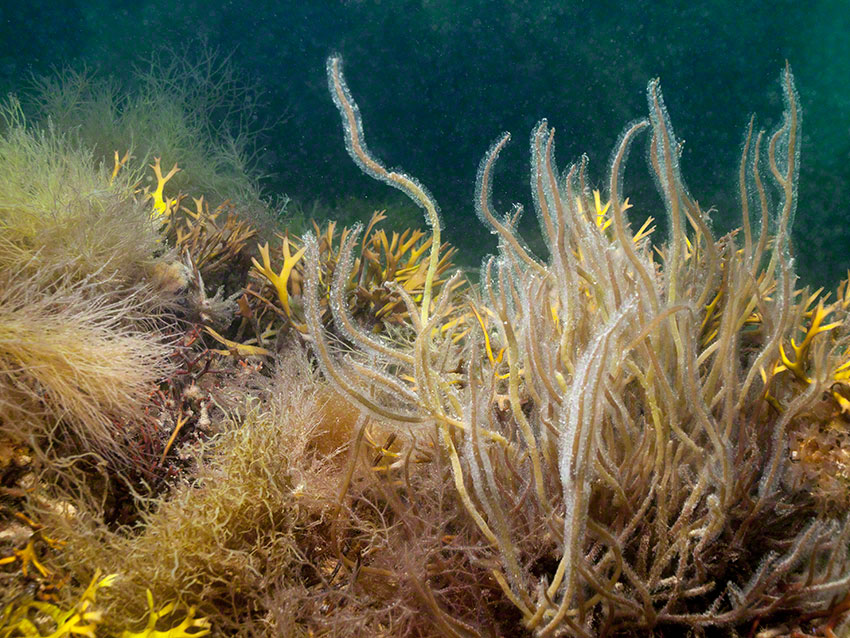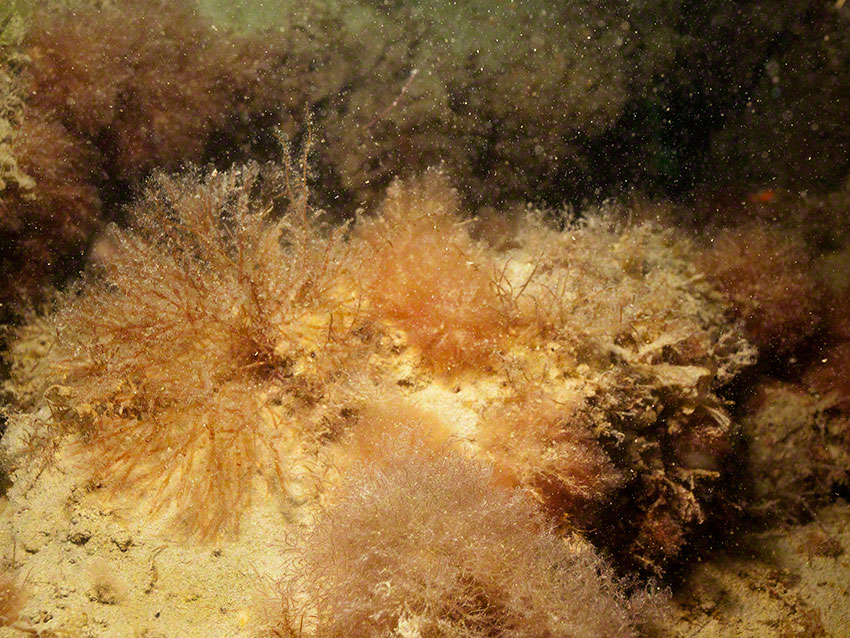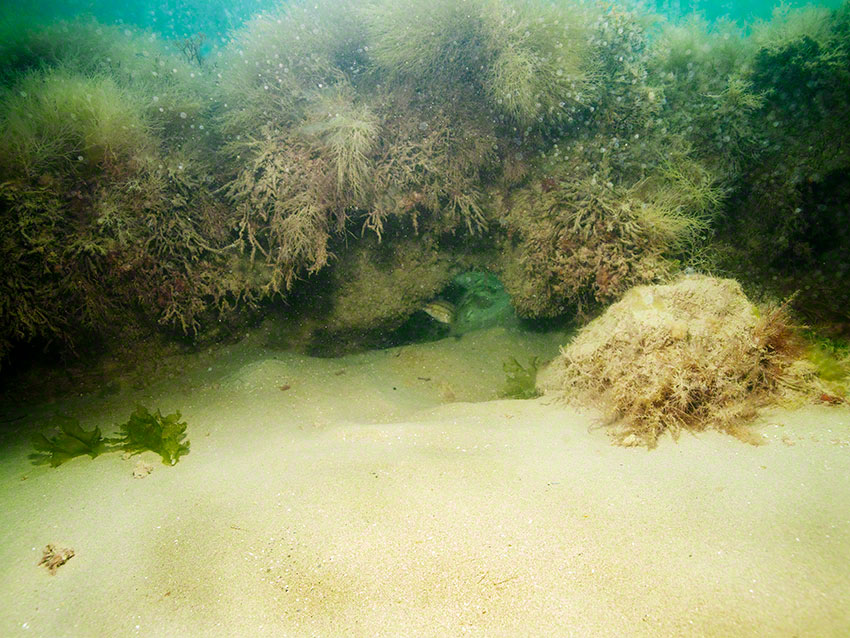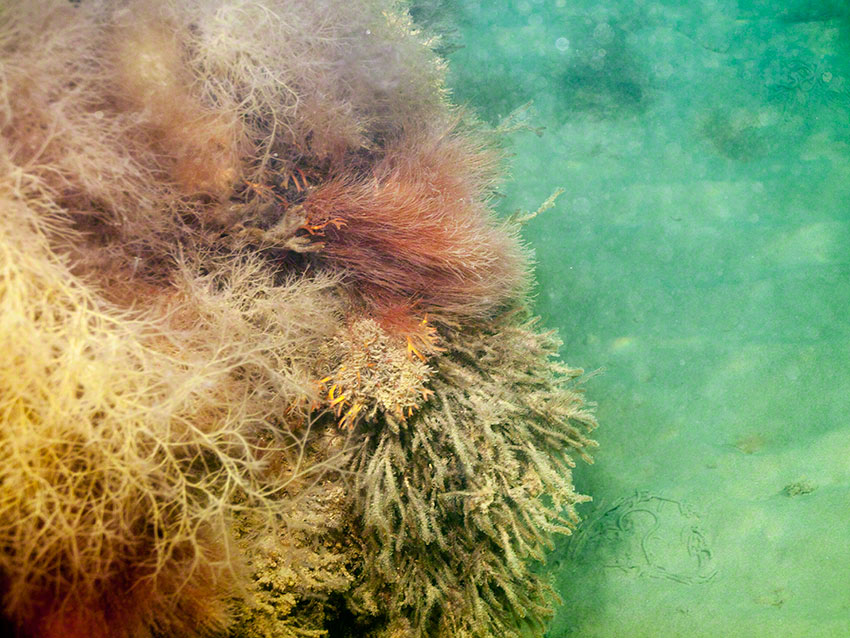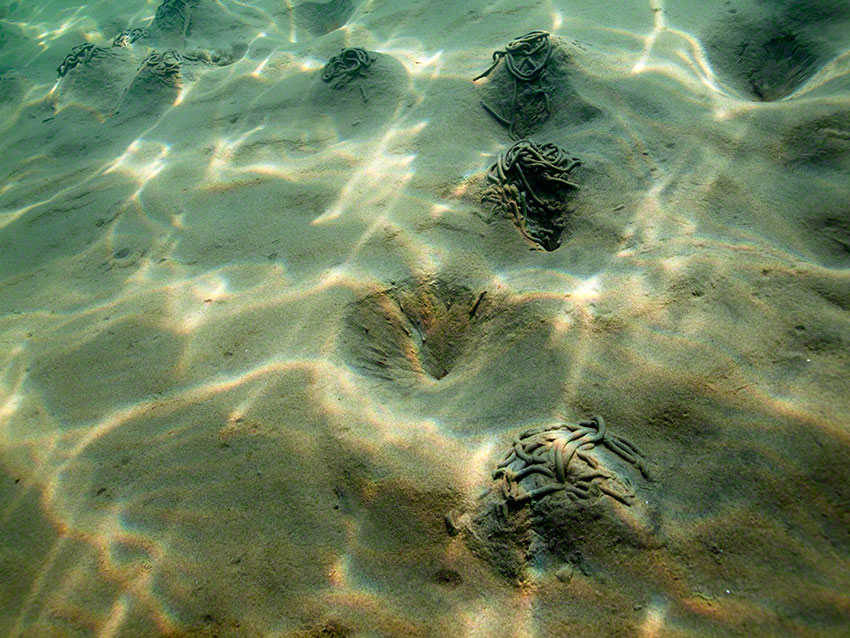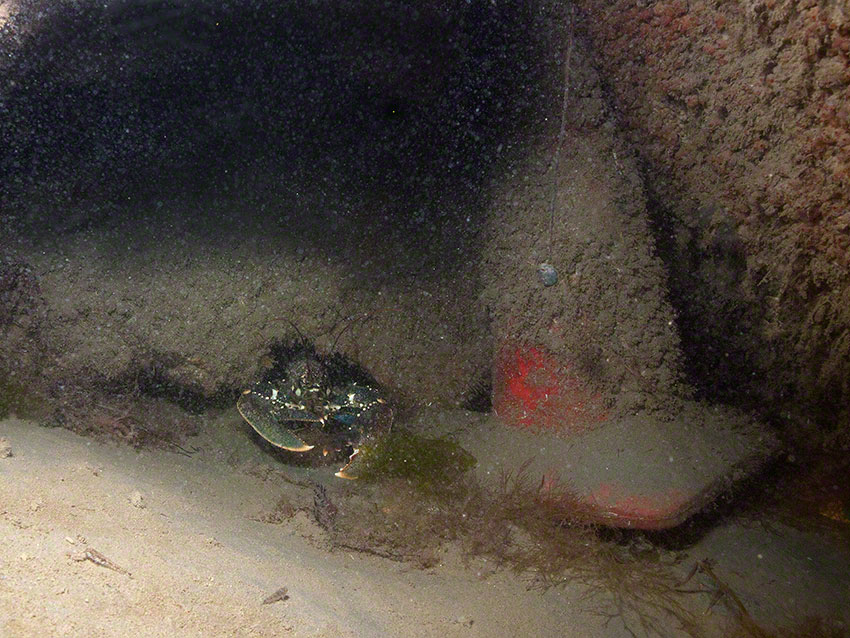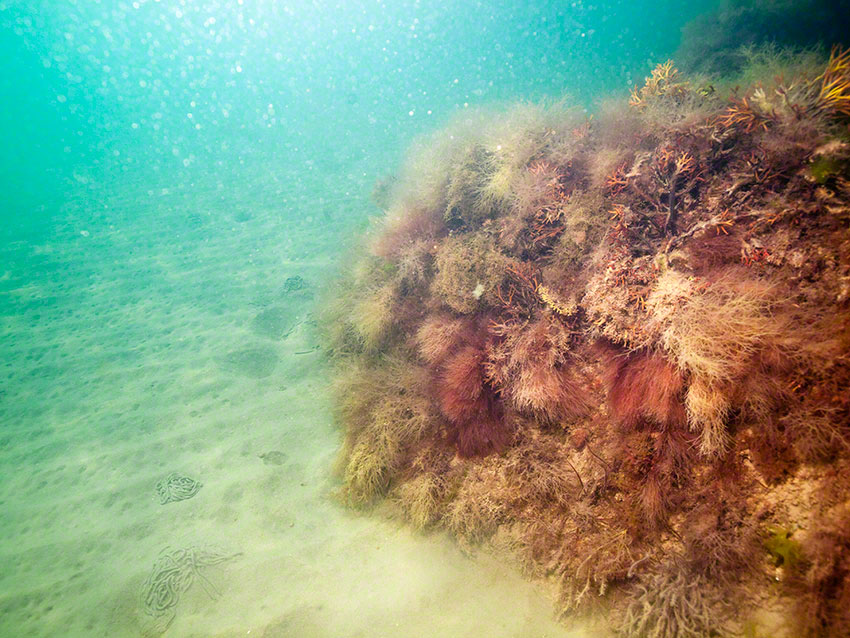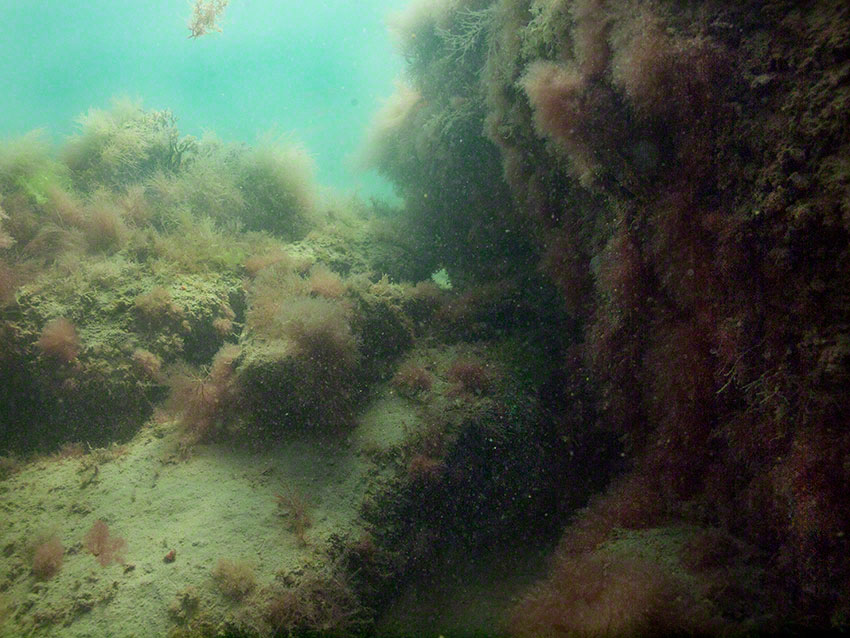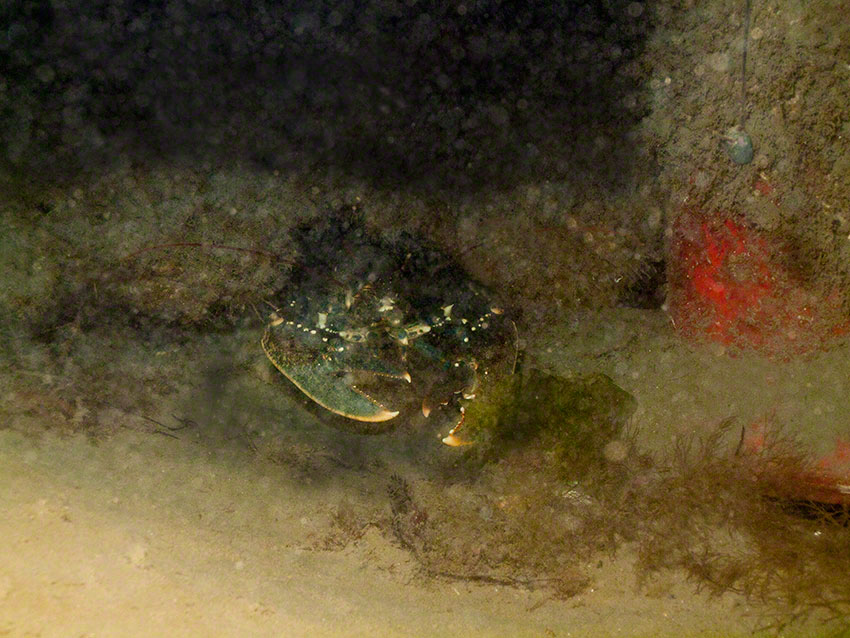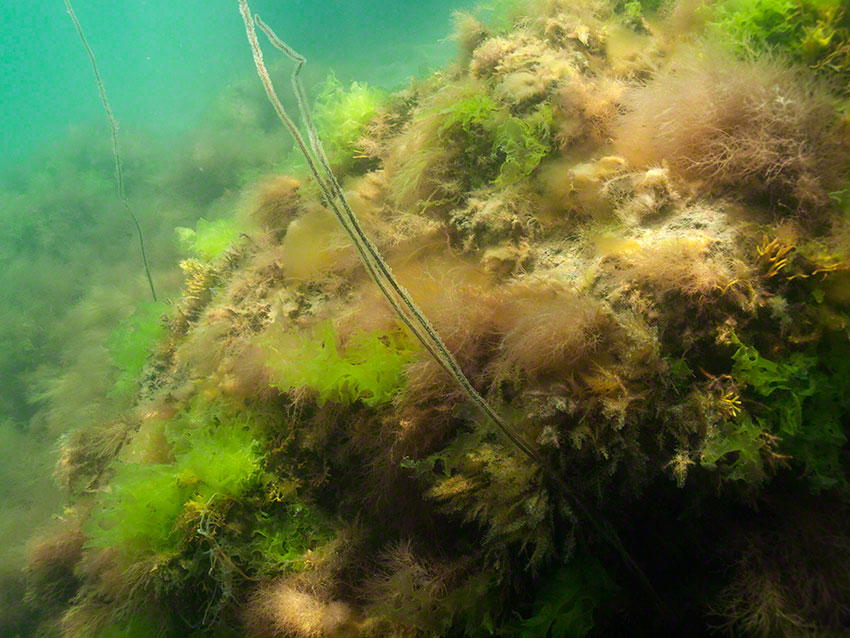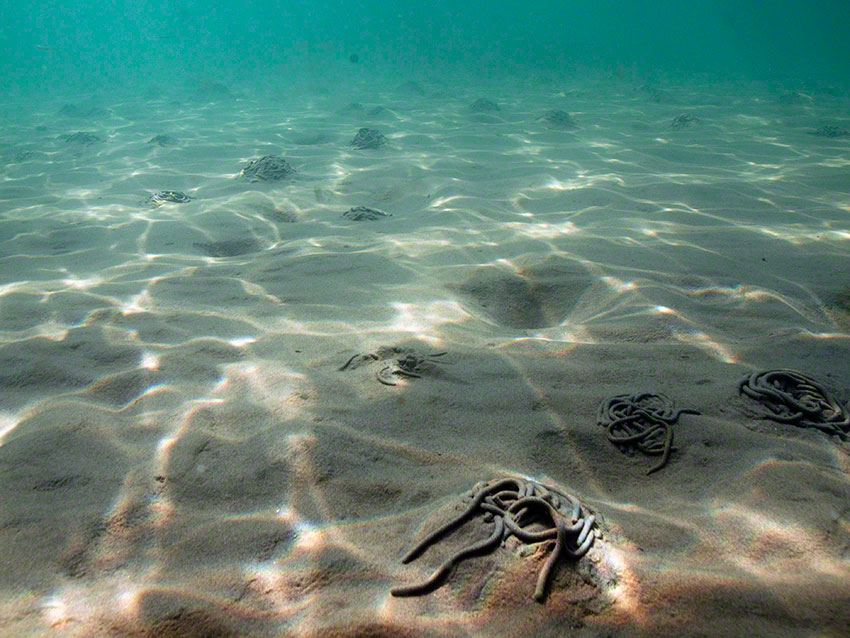The foreshore consists of shingle, sand and exposures of the Aldwick Beds (London Clay, Division B) outcrops of silty muds and sands rich in fossils (see here, and the Sussex Biodiversity Partnership).
The hard rock low lying reefs range from 0.25 to 2m in height, many of them are undercut with the formation of crevices, gullies, overhangs and small caves offering refugia for many marine animals including lobsters, crabs and several fish species. Horizontal faces are dominated by algae beneath this is a sparse sessile fauna. The steeper surfaces are extensively colonised by animals with sponges and ascidians (Molgula) dominant here, with some bryozoa and hydroids. Fish diversity and abundance was good around the reefs.
The surrounding seabed consists of rippled sand rich with Arenicola and other life. Adjacent to many of the rocks are exposures of the underlying clayey bedrock with sand, pebbles, gravel cobbles, shells and fossils. Many of the cobbles are broken pieces of the reefs. Chorda filum frequently take advantage of this substrate which by September grow to several metres long.
Should you wish to contact me:

Unless otherwise stated all images are Copyright of Gerald Legg, naturaimaging. If you would like to use any images, then high resolution ones can be obtained by contacting me.
This work is licensed under a Creative Commons Attribution-ShareAlike 3.0 Unported License.

